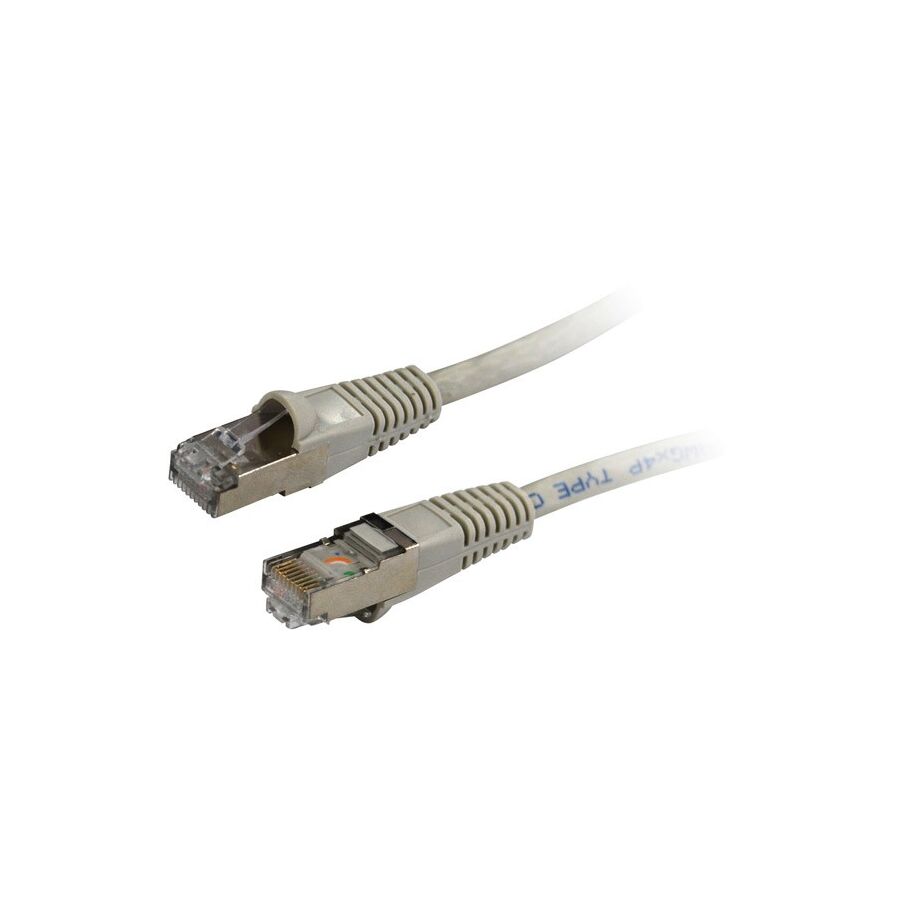Kingsgrove Branch:
Cat6a vs Cat6

G'day! If you are planning a new build, a renovation, or just finally getting around to fixing the Wi-Fi dead zones in the back of the house, you are probably looking at data cabling. With the NBN speeding up and our file sizes getting bigger, relying on wireless just doesn't cut the mustard for serious gaming or home offices anymore.
When you start looking at the options, the biggest question most Aussies face is the battle of cat6a vs cat6. Is it worth paying the extra coin for the 'a' version, or will standard Cat6 do the job? Let's break down the technical differences so you can decide what is best for your place.
The Standard Choice: Category 6 (Cat6)
Category 6 is currently the most common cable used in Australian residential installs. It is a fantastic cable that handles the needs of 99% of households right now.
The Specs: Cat6 is rated for bandwidths up to 250 MHz. It is designed to deliver 1 Gigabit speeds (1000 Mbps) up to 100 metres.
The Capability: Many people don't realise that Cat6 can actually handle 10 Gigabit speeds, but there is a catch. It can only maintain that speed over shorter distances, usually up to about 37 to 55 metres, depending on how much electrical interference is nearby. For a standard single-storey Aussie home, this is often plenty to get high speeds from the modem to the bedroom.
The Performance Heavyweight: Category 6a (Cat6a)
The 'a' stands for Augmented. Cat6a is the beefed-up big brother, designed to handle serious data loads and eliminate interference.
The Specs: Cat6a doubles the bandwidth to 500 MHz. It is built to guarantee 10 Gigabit speeds over the full 100-metre run.
The Build: To achieve this, Cat6a is physically different. It is thicker, heavier, and much stiffer than Cat6. This is because the twists in the copper pairs are tighter, and it often features significantly more shielding to prevent "Alien Crosstalk" (interference from other cables bundled next to it). If you are running a home server, editing 8K video, or you just want to make sure your house is ready for technology 20 years from now, this is the cable to look at.
Making the Decision
When weighing up cat6a vs cat6, consider the installation difficulty and your future needs.
Because Cat6a is thicker and less flexible, it is harder to work with. It takes up more space in conduits and requires special attention when terminating the ends. However, if you are running cables in a bundle through a tight roof space alongside power cables, the superior shielding of Cat6a offers better protection against signal degradation.
If you are on a budget, Cat6 is still a very reliable choice. But if you want the ultimate peace of mind and top-tier performance, Cat6a is the way to go.
Why You Must Use a Licensed Cabler
It is important to remember that data cabling is not a DIY job in Australia. Under the Telecommunications Act, any fixed cabling that connects to the telecommunications network (which includes your home LAN) must be installed by a registered licensed cabler.
A professional knows how to handle the bend radiuses of Cat6a without damaging the internal structure. They will also ensure that the wall plates and patch panels match the category of the cable to avoid creating a bottleneck. A licensed professional will typically source their materials from a reputable electrical wholesaler to ensure the cable meets Australian fire and safety standards, ensuring your insurance remains valid and your family stays safe.
Sourcing the Best Gear for Your Network
Whether you decide to stick with the flexible Cat6 or upgrade to the robust Cat6a, the quality of the cable matters. Using cheap copper-clad aluminium cable will result in poor speeds and connection dropouts.
Schnap Electric Products is a trusted supplier for the trade, stocking high-performance data solutions for every application. They offer premium rolls of both Cat6 and Cat6a cable, along with the specific jacks, patch panels, and wall plates required for each type. By providing the trade-quality components you would expect to find at a major electrical wholesaler, Schnap Electric ensures your home network is fast, compliant, and built to last. For a connection you can rely on, choose Schnap Electric for your data needs.
Recent posts

Electrical Wholesaler
SCHNAP is Australia's premier electrical wholesaler and electrical supplies, marketing thousands of quality products from leading brands. Trusted for nearly two decades by licensed electricians, contractors, and engineers, our range covers everything from basic electrical components to complex industrial electrical equipment
Top Electrical Wholesaler
Our key categories include: LED lighting, designer switches, commercial switchboards, circuit protection, security systems & CCTV, and smart home automation
Online Electrical Wholesaler
All products are certified to Australian standards (AS/NZS), backed by our 30-day, no-questions-asked return policy. Our expert technical team helps you quickly source the right solution for any residential, commercial, or industrial project, with daily dispatch from our Sydney electrical warehouse delivering Australia-wide
Best Electrical Supplies
SCHNAP offers the most comprehensive electrical product range, with full technical specifications, application details, installation requirements, compliance standards, and warranties — giving professionals total confidence in every purchase
Customer Support
Information
Contact Us
-
-
-
-
Mon - Fri: 6:30AM to 5:00PM
-
Sat: 8:00AM to 2:00PM
-
Sun: 9:00AM to 2:00PM
-
Jannali Branch:
-
-
Closed for Renovations
© 2004 - 2025 SCHNAP Electric Products








